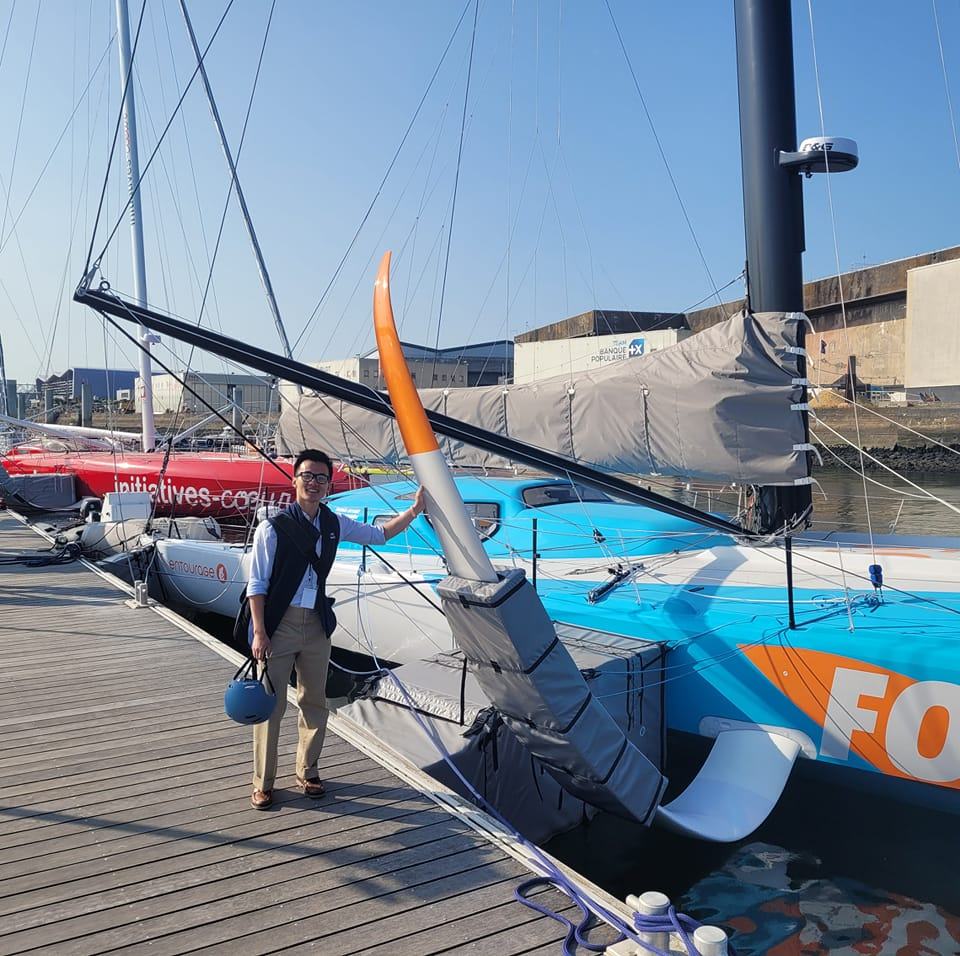My research interests are in the design optimization of lifting surfaces for
marine applications.
These structures include hydrofoils, propellers, turbines, struts, and energy saving
and energy harvesting devices.
The hydrodynamics of high-performance vessels are particularly challenging due to
increased susceptibility to
cavitation
and
ventilation phenomena.
Furthermore, since fluid loads scale with speed-squared, the deflections of the
structure can be significant enough where their impact on the hydrodynamic
performance must be considered.
This is called fluid-structure interaction or hydroelasticity.
Some materials like composites have directional stiffness, or material anisotropy,
that can be tailored by
the designer to achieve a desired shape under load.
Composites offer many benefits such as high
strength-to-weight ratio,
passive load-dependent shape adaptivity due to material anisotropy,
corrosion resistance,
and the potential for self-healing technology and embedded fiber Bragg grating
sensors.
They can also have improved fatigue life, enhanced cavitation performance, and
reduced
lifetime
life-cycle cost.
What happens when we combine hydrodynamics and composite structures?
In-flight shape can be carefully tuned to achieve hydrodynamic and structural
efficiency for a given operating envelope.
Most of the projects listed below are based on academic research or personal projects.
Click the links to find out more.
Hydroelastic tailoring of composite appendages using numerical optimizers
Ventilation of flexible bodies in waves
This group experimental work investigated ventilation boundaries of a PVC
surface-piercing
foil.
